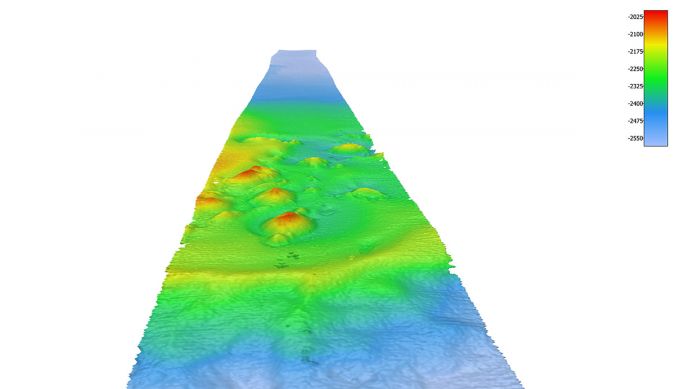As the OSIRIS-REx begins its return journey to Earth, Hydro International content manager Wim van Wegen wonders why it is that deep space feels more like home than the deep waters of our own planet, and whether Seabed 2030 is starting to turn the tide.
The first news item that I read on Monday morning in the week that the last issue of Hydro International went to print was about the stunning performance of an unmanned spacecraft deep in our solar system. The OSIRIS-REx – which stands for Origins, Spectral Interpretation, Resource Identification, Security-Regolith Explorer – is a NASA spacecraft that, as I read, has just begun its two-year return trip home to Earth. The OSIRIS-REx has left the space rock Bennu, where it had been collecting material from the asteroid.
The unmanned spacecraft has a long flight ahead of it: it is not expected to land on Earth until September 2023, when scientists will start to study the roughly 60 grams of pebbles and dust that the OSIRIS-REx sucked up from the asteroid Bennu in October. This all happened at a distance of nearly 333 million kilometres from Earth, and the asteroid samples were collected in a tray onboard the space probe.
I find this kind of news absolutely stunning, as it is fascinates me as to how we are able to send a space probe to an asteroid with a mean diameter of only 490m, and even manage to touch down on its surface and collect a sample using an extendable arm. This is the first time that the Americans have collected material from an asteroid; Japan led the way in 2005 with the missions Hayabusa and Hayabusa2.
It seems that our own solar system feels more like home than the deep waters of our own planet. It is often said that we know more about space than our own seas. At first sight, especially for people who are not involved in hydrography or oceanography, we earthlings may seem like fish out of water when it comes to exploring our oceans. However, if we look a bit further below the surface, we see some promising projects that are determined to turn the tide, of which the Seabed 2030 initiative probably stands out the most. This collaborative project between the Nippon Foundation of Japan and the General Bathymetric Chart of the Oceans (GEBCO) aims to gather all available bathymetric data to produce the definitive map of the world’s ocean floor by 2030.
The first time in my childhood that my interest was triggered in the underwater world was when my brothers and I explored the ditches around our house, and in particular the species that lived there. We discovered the great diving beetle, the water scorpion, dragonfly larvae and, of course, we were fascinated by the tadpoles that swarmed in large numbers through the shallow water.
Nature documentaries on TV brought the underwater world very close, but just like space it keeps on sparking the imagination, as there is still so much unknown about so many parts of the world’s seas. I have always been hugely intrigued by space, but I must say that our oceans pose an endless captivation as well. When I was a school pupil, geography – together with history – was my favourite subject. I have never lost my interest in maps. Maps of the Earth’s surface are overwhelmingly detailed, but maps of the bottom of the ocean have some serious catching up to do. Hydrography and all its encompassing technologies are set to make this possible.

The use of existing and emerging technologies will play a central role in making the Seabed 2030 project a success. Multiple vessels will be equipped with multibeam echosounders, while the rapid developments in remote technology combined with uncrewed vehicles make it possible to map the seafloor thousands of metres below the surface. Modern hydrography will be able to unveil many of the mysteries that today are still hidden deep in our oceans.
If all goes according to plan, the OSIRIS-REx capsule will land in the U.S. state of Utah on 24 September 2023. Let’s see if we have made any progress with mapping the bottom of our oceans by then. It seems to me that we will discover extraterrestrial life before we have a good overview of all that is hidden in the depths of our seas; however, the Seabed 2030 initiative will at least provide us with a detailed map of the surface of the underwater part of our world – as 71% of the Earth’s surface is water-covered, this would be a milestone and make us feel less like fish out of water.

